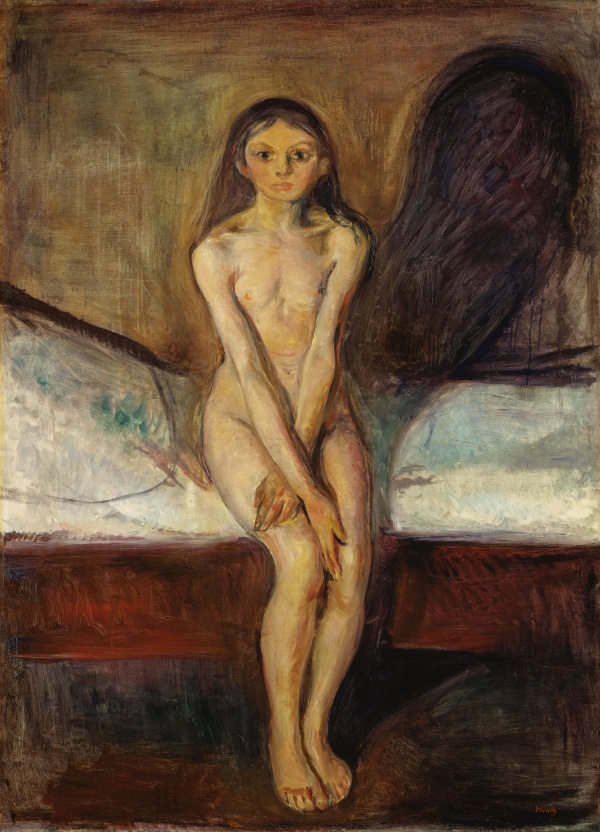Facts About Puberty
Edvard Munch's painting "Puberty" created between 1894 and 1895, stands as a compelling piece by the renowned Norwegian artist, praised for his contributions to expressionist art. This artwork, also translated into lithographs and etchings, portrays a young naked girl seated on a bed, her legs tightly pressed together, and her hands resting in front of her body. Her wide-eyed gaze is fixed straight ahead, which is often interpreted as a manifestation of anxiety, fear, and the awakening of her sexuality as she transitions into adulthood.
Munch painted "Puberty" during a period when he was profoundly influenced by his friends in Berlin, where he had gained considerable recognition and established a home from the late 1880s to the mid-1890s. The painting reflects Munch's own struggles with sexual depression, a recurring theme in his artwork. Some critics have noted resemblances between "Puberty" and Belgian artist Félicien Rops' etching "Le Plus Bel Amour De Don Juan." However, Munch himself denied any direct influence from Rops.
The subject and symbolism of "Puberty" have sparked diverse interpretations among art historians and critics. Arne Eggum, a notable commentator on Munch's work, suggested that while Munch did not aim to replicate Rops' piece, he might have drawn some inspiration from it. Interestingly, "Puberty" is believed to be a recreation of an earlier version that was destroyed in a fire, adding another layer of intrigue to its history.
"Puberty" represents a pivotal moment in Munch's artistic journey, paving the way for his exploration of personal emotions and themes in his later works. This painting remains a striking example of Munch's ability to capture complex emotions and profound themes in his art.

 Sweden
Sweden